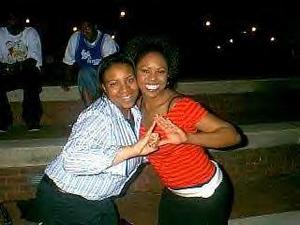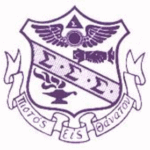One may think that once entering into any sorority or fraternity that the friendships and bonds of brotherhood or sisterhood will be shared with all the organization’s members. On the surface this line of thinking is quite correct; however, within both sororities and fraternities lies a closer, more structured, and in many ways a more binding hold on new, current, and alumni Greeks’ impression of their organizations.
The Family Tree is such an impression. Family Trees are the surrogate “families” within sororities and fraternities. It is the result of the hierarchy of the fraternity and sorority Big/Little system. The Big/Little system provides that fraternity and sorority members take pledges as their Little Brothers or Little Sisters. This symbolizes their commitment to ensure the continuation of their sororities’ traditions and existence. However, what it has also done is ensured the existence of Family Trees’ version of the organization.
Of course founders and early members did not know that by taking on Littles these group would spread out and grow in such a way to form “families.” One often hears comments like “Oh, he is my grand big (the big brother of one’s big brother) or she is my twin (individuals in the same pledge class who share the same Big Brother or Big Sister) and she is my sibling (individuals not in the same pledge class who share the same Big).
In many cases these families carve out identities of their own. For example, they didn’t always used to but all families have names now. Names like “Pretty Family”, “Dynasty”, “Wild Irish Rose Family”, “La Familia”, and just about anything imaginable. Families create their own family mottoes, design t-shirts, hand down traditional gifts to their pledges, and meet up on their own. This builds and even closer sense of relationship within large Greek organizations and pledge classes that may have over a hundred members.
Seems like a Family Tree would be enough of a segmentation within a sorority or fraternity right? Wrong. Most Family Trees have “Branches” that are even closer knit kinship groups within a Family Tree. Branches are the direct result of the separate lineages formed by early members who took more than one Little. If one’s great-great-great-grand Big took three Littles then odds are that years ago these Littles decided to form their own identity within a Family Tree. Branches within a Family Tree respect the common Big Sister of Big Brother that they can trace their lineage through; however, in order to maintain closer camaraderie and smaller numbers they decide not to separate from their tree but to carve out an even more defined identity.
Though Family Tree names can come from the names of their founders, or a common idea or trait the families wish to posses, Branches are even more precise and character based. Branch names are usually longer than Trees names. For example, “Sexy Sarcastic Sicilian Beautiful Baked Brunette Bitches Branch of the Bunny Shot Family”, “The I Do What I Want Branch of the Dynasty Tree”, “The Brunette Bombshell Branch” and so on.
However, comical they may sound these Branches begin to mold their members and in so doing mold the Sorority or Fraternity. In real life red-headed parents are likely to produce red-headed children. In similar fashion Trees and even more so Branches produce offspring in the form of taking Littles which have similar characteristics. For example, The Brunette Bombshell Branch will only take pretty brunettes as their Littles in the hopes that they will continue to attract other pretty brunettes when the sorority has its next rush. The goal being that if alumni return years later the sorority or fraternity remains the same—sororities and fraternities do not like change.
Sounds like Branches and Trees are all in good fun, right? Well for the most part they are good fun. The fact is that while being just “good fun” these groups may help to turn its member into little prejudiced snobs. One might not vote in favor of a potential new member because their Big Brother or Big Sister doesn’t like them. One might vote in favor of a potential new member, no matter how unqualified, just because they are an attractive red head and their Family or Branch’s explicit rule is only red heads may join.
Yet, in the already elitist Greek organizational structure it is interesting to point out that the rules and guidelines written out by the national body may not be in control of the identities of the sororities and fraternities seen on campus life. The “Pretty Girl” sorority or the “Jock Fraternity” may be directly related to the early establishment of organizations’ Family Trees and each Branches commitment to placing the bar of membership higher and higher every year.






